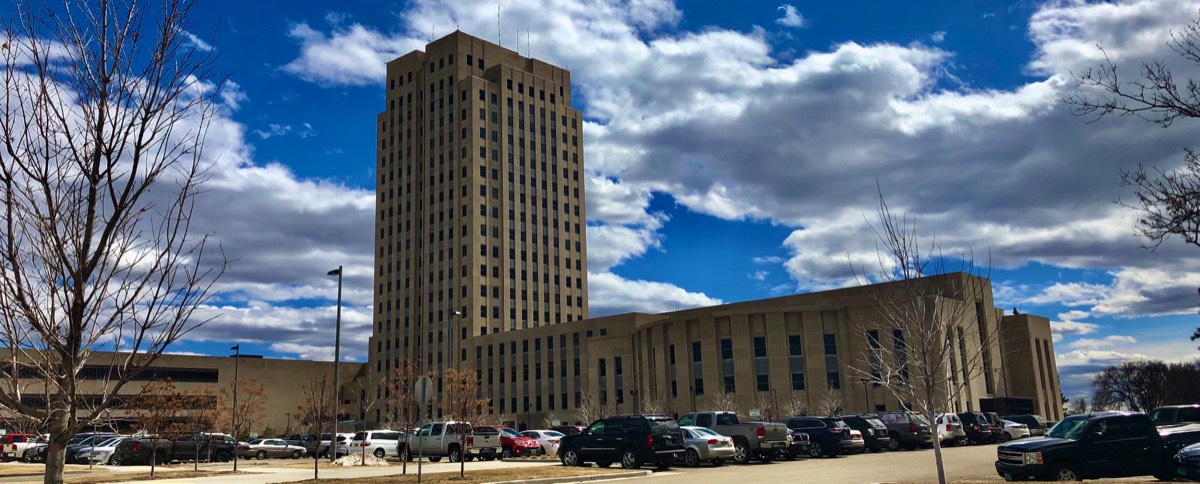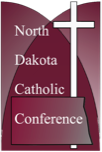The Legislative Process
The North Dakota Legislature
The North Dakota Legislative Assembly consists of a Senate with 47 senators and a House of Representatives with 94 representatives. The Legislative Assembly regular session usually convenes the first week of January of an odd-numbered year.
Standing committees in each chamber handle most of the daily work of the legislature. They hold hearings, consider amendments, discuss the bills, and make recommendations to the full chamber. These committees are formed by subject matter, such as the Senate Judiciary Committee and the House Human Services Committee.
The appropriation committees are also important. They review every spending bill and most bills that have a fiscal impact. Even if a bill gets a favorable recommendation from a committee, an appropriations committee could reduce the funding or not give the bill a favorable recommendation.
By the thirty-fourth day, the chambers must vote on every bill. Bills that pass “crossover” to the other chamber. The whole process then repeats itself in the second chamber.
If the second chamber defeats a bill, the bill is dead. If it amends and passes the bill, the legislation is sent, with its amendments, back to the first chamber. That chamber can either concur or not concur with the changes. If it does not concur, a conference committee is appointed with members from both chambers to try to work out the differences.
Participation in the legislative process is an important way to exercise our political responsibility as Christians.
To Become Informed:
- Read the newspaper and listen to radio and television news
- Attend candidate forums
- Discuss subjects with family, friends, neighbors, and clergy
- Look for websites on the issue
- Get the North Dakota Catholic Conference E-Newsletter
- Attend legislative hearings and floor sessions
To Make a Difference:
- Join the Legislative Action Network
- Testify at the legislature
- E-mail, call, or write your legislators
- Talk to your legislators during their visits home
Did you know?
In North Dakota, every bill introduced gets a committee hearing and a vote by the full Senate or House. In other words, committees cannot hold or “kill” bills. They can only make recommendations.
This is one feature that makes the North Dakota legislature a “citizens” legislature.

Committee
Everyone has the right to testify before the North Dakota Legislative Assembly on any bill or resolution.
North Dakota has one of the most open legislatures in the nation. Every bill must have a public hearing, must be publicly voted upon by the committee, and then must come before the full House or Senate for still another public vote. Your opportunity to testify on a bill comes at the committee hearing.
Legislative committees meet in rooms at the State Capitol. You can come into a committee meeting at any time, even if the door is closed or a hearing is in progress.
Lists of the legislative committees, committee members, and the days and places committees meet are available online at ndlegis.gov and on screens in the Capitol.
Before the Hearing, You Should...
Find out when and where your bill will be heard. Be on time for the hearing. Usually, once a hearing is closed on a particular bill, no further testimony is heard. Plan your testimony. Although not necessary, it is helpful to have written copies of your comments available. See if other persons will be testifying on your bill. If so, try to coordinate your testimony before the hearing to avoid duplication.
At the Hearing . . .
All people usually get a chance to speak, but sometimes, because of large turnouts, it is sometimes not possible to give everyone a chance to speak. If you do not get a chance to testify, your presence may be acknowledged and you might be asked if you favor or oppose the bill. And, you can always submit written testimony.
Even if you do not testify, sign the witness sheet at the lectern. Give the bill number, whether you favor or oppose the bill and your name.
The chairman will announce the beginning of the hearing on a particular bill. The first speaker is usually the bill's sponsor. The chairman then asks for testimony, first from proponents and then opponents. Wait your turn.
Plan on following the custom (although it is not absolutely necessary) of beginning your remarks by addressing the chairman and committee members, giving your name and address, and why you are there. For example: "Mr. or Madam Chairman, and members of the committee, my name is John Q. Public from Edwinton. I'm in favor of this bill because . . .”
Be brief. Do not repeat what others have said. The hearings are informal, so be conversational. Avoid being too technical. Avoid using acronyms or technical references unless you first explain what they mean.
Do not be nervous, or worried about doing something wrong. There are no "rights and wrongs" about testifying. Legislators are just your friends and neighbors who want to hear what you have to say.
Expect some questions and comments from committee members. These questions are not designed to embarrass you, but merely to get additional information.
What We Do
The North Dakota Catholic Conference acts on behalf of the Roman Catholic bishops of North Dakota to respond to public policy issues of concern to the Catholic Church and to educate Catholics and the general public about Catholic social doctrine.

Contact Us
North Dakota Catholic Conference
103 South Third Street, Suite 10
Bismarck, North Dakota
58501
1-888-419-1237
701-223-2519
Contact Us

